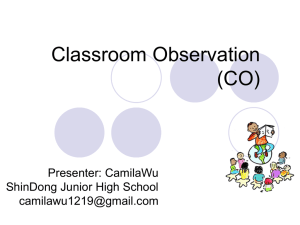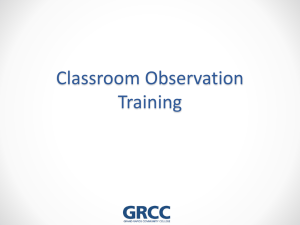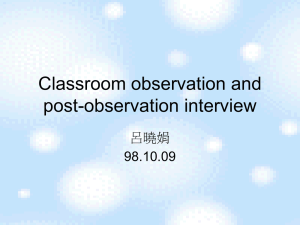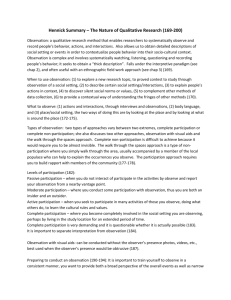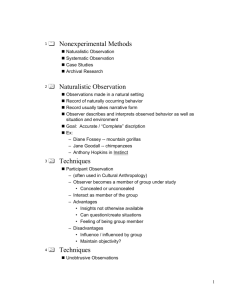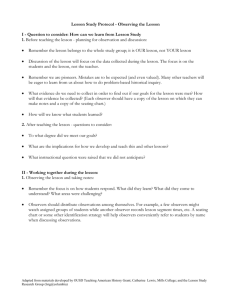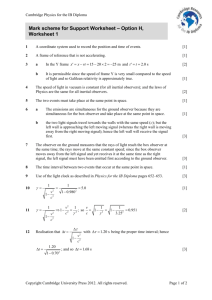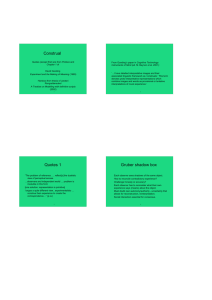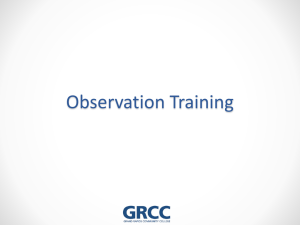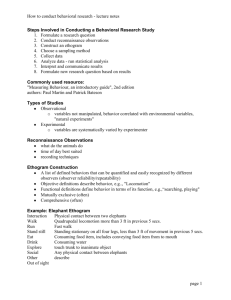Ark Tanaka & Tara Sadeghian - Big Day In 2014
advertisement
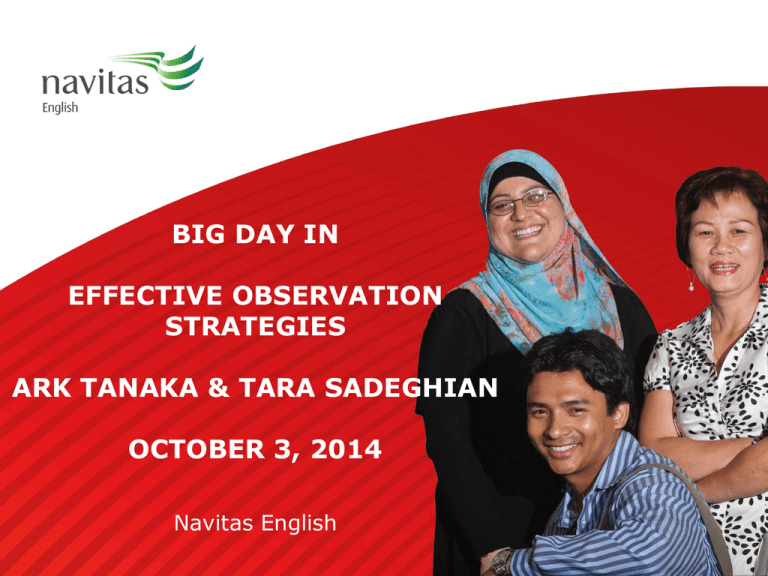
BIG DAY IN EFFECTIVE OBSERVATION STRATEGIES ARK TANAKA & TARA SADEGHIAN OCTOBER 3, 2014 Navitas English Questions 1. Why do we observe a teacher? 2. How often do we observe a teacher? 3. Are there any potential obstacles in running effective teacher observation? SESSION OVERVIEW • To explain what made us set up an effective observation plan • To explain the professional development observation procedures • To report on what we have learnt DIFFERENT PURPOSES FOR OBSERVATION: Steps that we took to develop a structured teacher observation plan 1. 2. 3. 4. 5. 6. 7. 8. Built a culture in which teachers feel comfortable being observed Set a time frame to complete Ts observation Designed relevant observation documents Conducted pre-observation sessions with Ts Conducted observation sessions Conducted post-observation discussion with Ts Provided options for Ts to develop their teaching skills Followed up on Ts observed 1.Building the culture 1.Setting the time frame 3. Designing relevant observation documents 4-7. Observation Procedures Different action plans and follow up on Ts Teacher A Experienced SEE •Teacher agreed to improve one aspect of her teaching skills, which was to increase S-S interactions by reducing teacher talking time Teacher B Experienced AMEP Teacher C Novice SEE Teacher D Experienced SEE/AMEP •Teacher wanted to observe a model lesson by T&L as she was not comfortable observing another teacher whom she didn’t know well. • Teacher agreed to observe another teacher in order to improve the structure of his own lesson plan •Teacher identified her own P.D needs without being observed and asked for peer-observation with an ELICOS teacher Principles that we followed for peer observation process 1. Developmental, not judgmental- Observation is a learning experience for an observer. 2. Collaborative- observer and observee discuss a teaching area the observer intends to develop through peer observation 3. Manageable in terms of time Key success factors 1. Building trust between observers and teachers 2. No paperwork for teachers! 3. No written lesson plan! 4. Constructive feedback strategies 5. Immediate post-observation feedback 6. Options for action (self-study, peer-observation, modelling, having a mentor, etc) Constructive feedback strategies Dos • Give immediate feedback • Remind the purpose of observation • Start with self reflection • Be specific and concrete • Praise sandwich • Negotiate actionable plan with support Don’ts • Delay feedback • Start with criticism/cool feedback • Highlight too many areas to work on • End with negative comments Feedback from our teachers… Teacher A: • “My initial reaction to observation was negative due to my previous experience. In the past, feedback was given badly .” • “But feedback was good because there were no negative points, instead they gave me suggestions as to how I can do things differently.” • “Surprised with how observers saw many good things in my lesson.” Teacher B: • “I was very eager about the observation plan and volunteered to be observed first as I felt this was an ideal opportunity for observers to give me genuine feedback and insight into some of my classroom teaching methods.” • “Overall, I recommend peer-observation and team teaching amongst teachers should be practised and encouraged from time to time to promote individual’s professional development.” Achievements 1. 2. 3. 4. Identified each teacher’s strengths and weaknesses Arranged guided peer observation sessions Enabled teachers to identify their own P.D needs Created an environment in which teachers feel comfortable learning from others Our future plan 1. Deliver P.D sessions reflecting our teachers’ needs 2. Assist teachers with identifying their SMART Goals 3. Encourage experienced teachers to deliver P.D for novice teachers COMMENTS/ QUESTIONS? THANK YOU!
